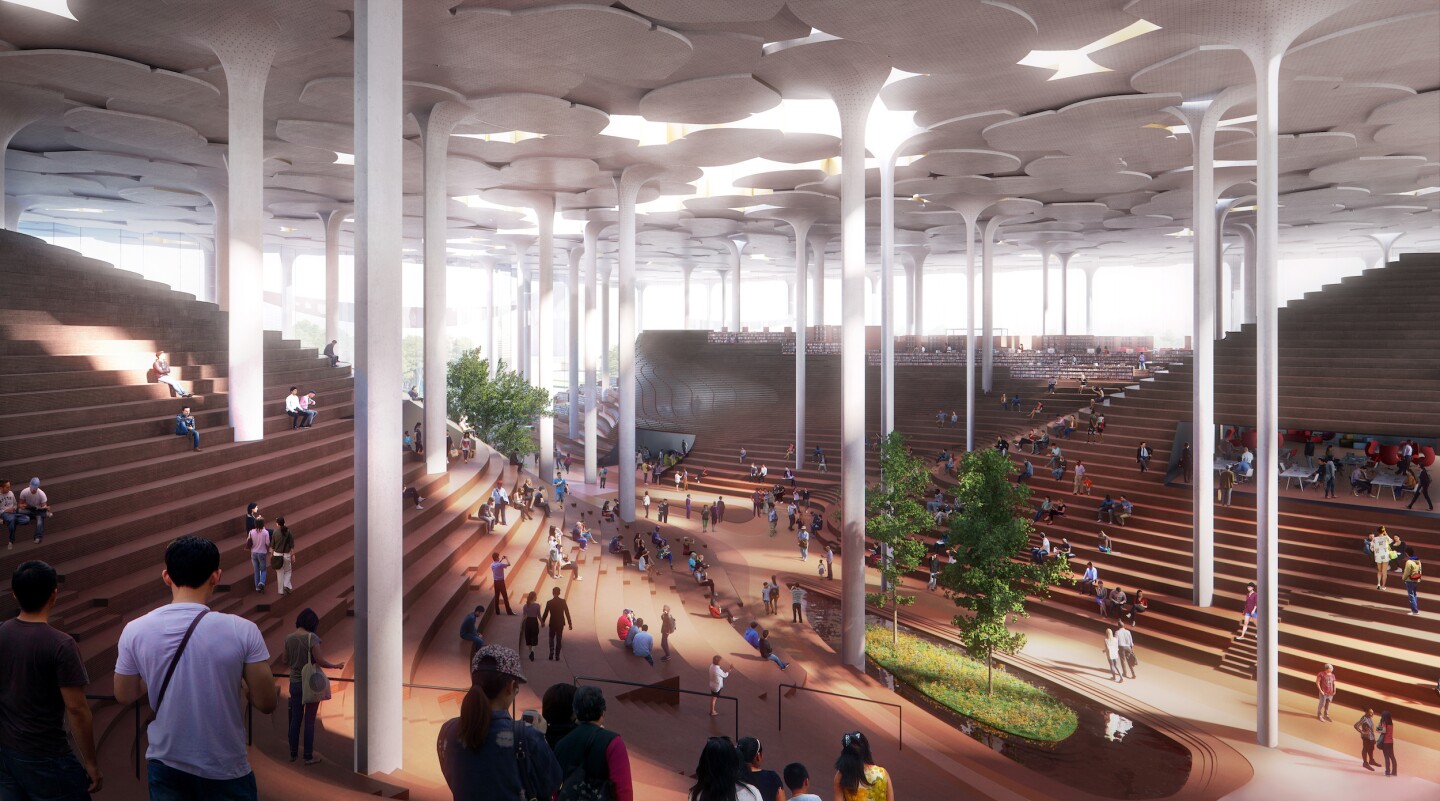Snøhetta’s upcoming Beijing Sub-Center Library in China is not like your average city library. It will feature glazed walls that enclose a series of tree-shaped columns, as well as a forest canopy-like roof. The idea behind its eye-catching design is that visitors will be able to enjoy a light-filled environment that plays on the idea of sitting under a tree and reading a book.
The Beijing Sub-Center Library will rise to a height of 16 m (52 ft) and, according to Snøhetta, will be China’s first self-supporting glass facade project (we expect more detail on this once its complete). Whether it’s inspiration or just coincidence, the interior design bears more than a passing resemblance to Frank Lloyd Wright’s Johnson Wax Headquarters, though its layout will include amphitheater-like seating, informal reading nooks, and areas that encourage socialization. The forest-like motif isn’t just for looks either, but also serves a practical purpose.
“Extended from the sculpted reading landscape are columns that reach up to support the roof – a ginkgo forest-like canopy,” explains Snøhetta. “Each tree column is also a building technology component, resulting in a distributed technology system that tackles climate control, lighting, acoustic comfort, and rainwater disposal. The stepped landscape areas with the tree-like surroundings invite people to sit down and take a break at any time on their journey through the building – creating an informal zone and the notion of sitting under a tree reading your favorite book.
“Under the roof canopy and atop the sculpted landscape is a variety of experiential spaces where visitors can find their private place for reading and learning while always being connected to the larger common area. Creating a feeling of being tall and low, open and closed, private and public all at the same time. There are no designated ‘sections’ or categorizations of knowledge.”

Plomp
In addition to the rainwater collection system mentioned, the Beijing Sub-Center Library will also feature integrated solar panels on its roof to reduce its draw on the grid and overhanging roof sections to mitigate solar heat gain. The glazed facade will be controlled with shading. Most construction materials have been sourced locally, and modular components have also been used to speed up construction time and lower costs.
The project was originally commissioned in 2018 following an architecture competition and is currently under construction. It’s expected to be completed by the end of 2022.
Source: Snøhetta
Source of Article